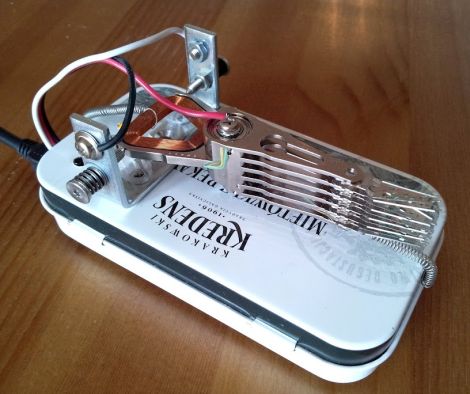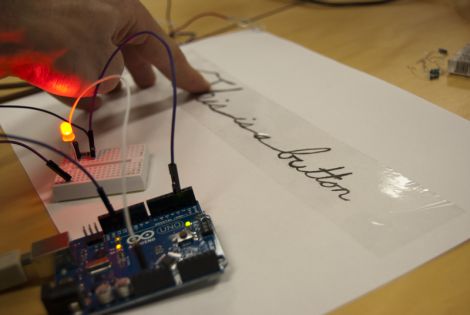
[Matt and Jason Tardy], who make up the musical performance duo known as AudioBody, were recently featured on Make: explaining how they put on one of their trademark segments. The most popular portion of their show features color changing tubes of light which the pair spin and fling around not unlike a higher-tech version of the Blue Man Group. While the visuals are pretty slick, the technique behind it is far simpler than most people initially imagine.
As you can see in video below, the tubes look to be nothing more than simple white lights. As the brothers work through their performance however, the tubes switch from white to blue and back again with a liquid-like transition between the colors.
The [Tardys] say that most people peg a microcontroller or other complex electronics as the source of their light wizardry, but the real answer is much simpler. Embedded in the end of each tube is a bright LED flashlight. A sliding blue filter positioned inside the tube provides the silky smooth transition between colors – no fancy electronics required.
If you would like to see how they were built, be sure to swing by the AudioBody web site for a how-to presentation by the [Tardys] themselves.
Continue reading “Musical Light Show Is Far Less Complex Than You Might Think”
















